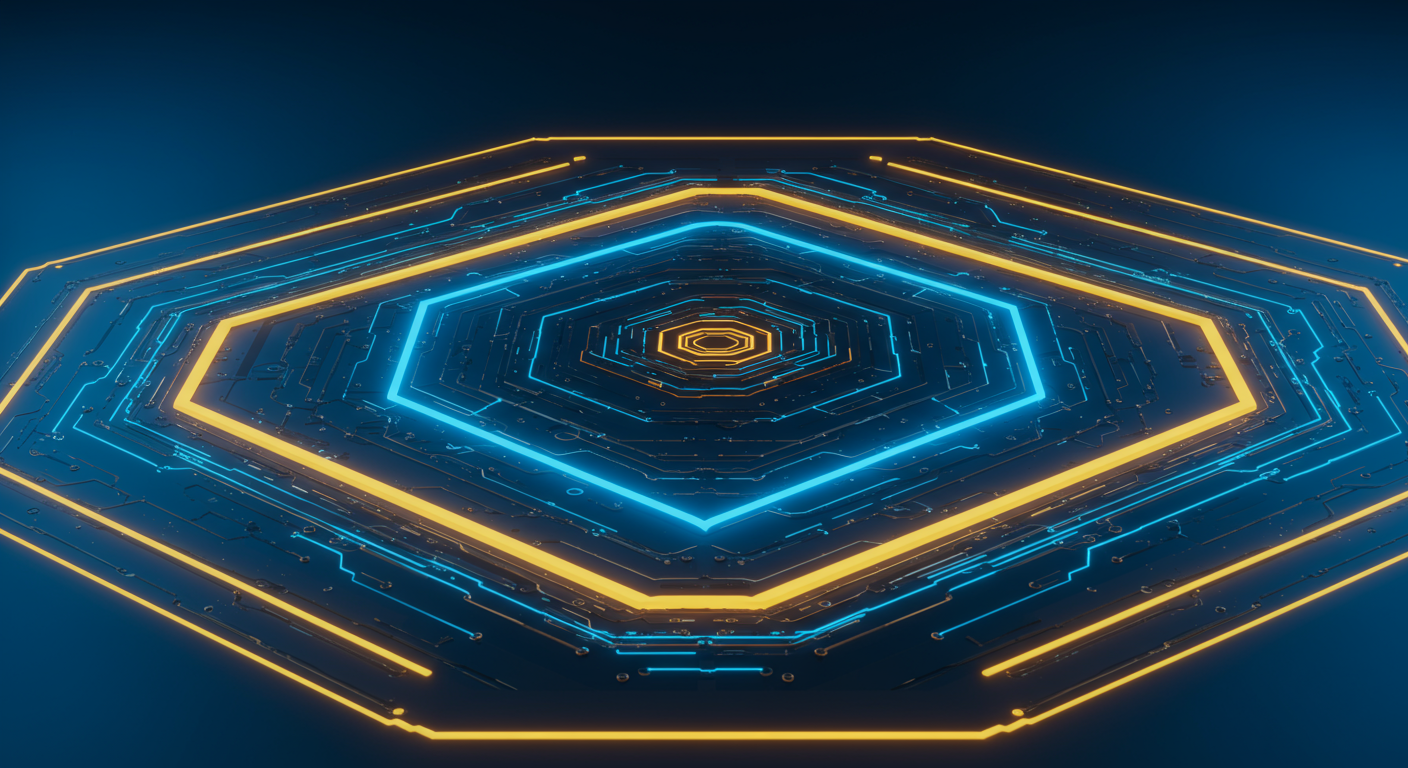Model Context Protocol (MCP): The Adapter-First Playbook for Seamless AI Integration

Unlocking Seamless AI: A Comprehensive Guide to Model Context Protocol (MCP)
Tired of AI models that don't play well together? Then you're ready for the Model Context Protocol.
What's the Problem?
The current AI landscape is fragmented. Models built for different tasks and using diverse data often struggle to communicate and share information effectively. This creates:
- Workflow bottlenecks: Integrating multiple AI tools becomes a coding headache.
- Performance limitations: Models lack a holistic understanding of the context, limiting their potential.
Enter Model Context Protocol (MCP)
MCP is an evolving set of standards and methodologies designed to create interoperability between AI models. Think of it as a universal translator and common language for AI. This improves communication among the various AI tools for software developers.
The 'Adapter-First' Approach
MCP leverages an "Adapter-First" methodology. This means rather than rewriting core model code, we use adaptable interfaces to bridge the gaps.
Imagine different power outlets around the world. An adapter allows you to use your device anywhere, without modifying the device itself. MCP works similarly.
Benefits Galore
- Streamlined workflows: Integrate diverse AI capabilities without complex custom coding.
- Reduced complexity: Simplifies AI deployments, making sophisticated AI solutions more accessible.
- Faster deployment: Get AI solutions up and running in less time.
- Improved model performance: Models can leverage a richer understanding of context to deliver more accurate results.
The AI Integration Maze: Why MCP is the Guiding Thread
Integrating AI models should be a seamless symphony, but often it's more like a cacophonous orchestra tuning up – loudly, and out of sync.
The Problem: An AI Babel
The modern AI landscape is a mosaic of models from different vendors, each speaking a different language. Integrating these disparate systems presents significant challenges:
- Data Format Inconsistencies: Imagine trying to build a house with bricks, wood, and marshmallows. Each AI model prefers data in its own unique format, leading to endless wrangling.
- API Incompatibilities: Every vendor has its own API, a custom-built doorway. Connecting these doors requires custom adapters for each interaction.
- Context Loss: Important nuances can be lost when passing data between models, like playing telephone with critical information.
MCP: The Universal Translator
The Model Context Protocol (MCP) offers a potential solution. MCP aims to provide a standardized interface, acting as a universal translator between AI models.
- Simplifies Complex Scenarios: MCP provides a common language for AI systems, simplifying the overall integration process.
- Addresses Key Pain Points: By focusing on data consistency, API compatibility, and context preservation, MCP directly tackles integration nightmares.
Real-World Impact
Consider a marketing professional using AI for ad copy generation. Instead of manually transferring data from a data analytics tool to a marketing automation platform, MCP standardizes the interaction, enabling more efficient and data-driven campaigns.
In short, MCP is the adapter-first playbook for seamless AI integration, promising to bring order to the AI chaos. Next, we'll explore how it works.
The promise of seamless AI integration is within reach, thanks to Model Context Protocol (MCP) and the Adapter-First methodology.
The Adapter-First Approach: Your Key to MCP Success
Forget monolithic integrations; the Adapter-First approach is all about modularity. It prioritizes building specialized "adapters" that act as translators between your existing systems and AI models using MCP. This approach emphasizes breaking down complex integrations into smaller, manageable pieces.
Why Adapters Matter
Adapters are the unsung heroes of AI integration. They handle the messy details of:
- Interface Translation: Different AI models speak different "languages." Adapters translate requests into the format a specific model understands. For instance, an adapter might convert text input into the numerical vectors required by a specific machine learning model.
- Data Format Conversion: Adapters transform data from legacy systems into formats suitable for AI consumption. Think of it like a universal plug adapter for your data!
- Protocol Mediation: Adapters manage communication protocols, ensuring smooth data flow between systems using different standards.
Backwards Compatibility and Legacy Systems

One of the biggest challenges is integrating AI with existing infrastructure, often referred to as legacy system integration AI. The Adapter-First methodology shines here:
- Adapters provide a buffer, allowing legacy systems to continue functioning without modification.
- This enables phased rollouts of AI capabilities, minimizing disruption.
- Adapters facilitate backward compatibility AI, allowing newer models to work with older data formats and interfaces.
Designing Your MCP Migration Strategy: A Step-by-Step Playbook
Migrating to a Model Context Protocol (MCP) is like upgrading from individual language tutors to a universal translator for all your AI models. It enables models to seamlessly share and understand context, boosting efficiency and collaboration. Here's a playbook to ensure a smooth transition:
Step 1: Assessment – Know Your Landscape
First, conduct a thorough AI integration assessment. What models are you currently using? Where are the integration points?
- Identify existing AI infrastructure.
- Pinpoint key areas where integration is crucial.
- Document current AI landscape
Step 2: Adapter Development – Bridging the Gap
Adapters are key! They allow each model to communicate using the MCP standard.
- Develop or select appropriate adapters for each AI model.
- Ensure adapters are compatible with your existing systems.
- Think of them as power outlet adapters ensuring everything plugs in.
Step 3: Context Mapping – Defining the Conversation
How will context be passed between models? This is crucial for seamless collaboration.
- Define the flow of context data.
- Establish clear rules for context management.
- Think of it like designing a robust API.
Step 4: Testing and Validation – Proof in the Pudding
Thorough testing is non-negotiable. We are searching for smooth transitions here.
- Test the integrated system rigorously.
- Validate performance and accuracy.
- Use diverse datasets to catch edge cases.
Step 5: Deployment and Monitoring – Smooth Sailing
Deploying your MCP-enabled system isn't the end, it is just the beginning.
- Roll out the system incrementally for better control.
- Continuously monitor performance and adapt as needed.
Model Context Protocol (MCP): The Adapter-First Playbook for Seamless AI Integration isn't just theory – it's already transforming how businesses leverage AI.
MCP in Action: Real-World Use Cases and Success Stories
MCP's adapter-first approach simplifies AI integration, and here's where it shines.
AI-Powered Customer Service
Imagine a world where every customer interaction is personalized and efficient.
- Example: A major telecom company integrated a conversational AI chatbot, powered by MCP, into its existing CRM system. This drastically cut down on customer wait times and improved first-call resolution rates by 35%. They could train the model on internal documentation and existing customer conversations, easily adapting it to their specific needs.
- Results: Reduced operational costs, enhanced customer satisfaction.
Fraud Detection AI
- Example: A financial institution adopted an MCP-enabled fraud detection AI system. It analyzes transaction data in real-time to identify and prevent fraudulent activity.
- Results: A 40% decrease in fraudulent transactions and significant cost savings. Before MCP, this required massive infrastructure changes; now, it’s an adaptable integration.
Personalized Recommendations AI

- Example: A leading e-commerce platform uses MCP to deliver personalized product recommendations to its customers.
- Results: Implementing this system increased sales conversions by 20%. Because the MCP framework made it easy to swap out different recommendation algorithms, the platform could continuously A/B test new approaches and optimize its performance.
Choosing the Right Tools and Technologies for Your MCP Journey
The Model Context Protocol (MCP) promises to revolutionize AI integration, and selecting the right tools is paramount to a smooth and successful journey. Think of it like choosing the right instruments for an orchestra - each plays a vital role in creating harmonious AI solutions.
Adapter Frameworks: The Universal Translators
Adapter frameworks are the unsung heroes, translating between disparate systems.
- Comparison: Consider LangChain, known for its flexibility, and LlamaIndex, prized for its data-centric approach.
- Real-World Analogy: These frameworks are like universal translators, enabling different AI models and data sources to speak the same language.
AI Platforms: The Orchestration Hub
AI platforms provide the infrastructure to run, manage, and scale your AI models.
- Considerations: Google Cloud AI Platform, Azure Machine Learning, and AWS SageMaker offer comprehensive suites. Evaluate their pricing, scalability, and pre-built services.
- Integration is Key: Ensure the platform seamlessly integrates with your chosen adapter framework.
MCP Tools: Tailored Solutions
Specific MCP tools are emerging to streamline the integration process.
- Emerging Solutions: Keep an eye on specialized tools designed to automate MCP configuration and management. These can significantly reduce development time and complexity.
- Example: A tool focusing on code assistance might help generate MCP-compliant code snippets.
As AI models become increasingly sophisticated, seamless integration is not just a luxury, but a necessity.
The Rise of AI Interoperability
Model Context Protocol (MCP) is emerging as a critical solution, streamlining the way different AI models communicate and collaborate. This "adapter-first" approach simplifies integration, allowing AI systems to work together more effectively. MCP represents a significant step towards achieving true AI interoperability.Accelerating Innovation and Adoption
MCP has the potential to accelerate AI innovation by fostering a more open and collaborative AI community.- Standardized protocols reduce the friction involved in combining different AI tools and models.
- This ease of integration encourages developers to experiment and build upon existing solutions.
- For example, a writing and translation AI tool could seamlessly integrate with a design AI tool to automatically generate marketing materials.
Evolving Standards and Protocols
MCP is helping define evolving standards for AI interoperability.
This includes:
- Establishing common data formats.
- Developing secure communication channels.
- Ensuring models can understand and utilize each other's outputs.
A Collaborative Future
MCP fosters a more collaborative AI environment where researchers and developers can share resources, knowledge, and best practices. This collaborative spirit is essential for driving the future of AI. It can be compared to the open-source movement that revolutionized software development, as discussed in our AI News articles.In summary, Model Context Protocol isn't just a technical specification; it's a blueprint for the future of AI, setting the stage for broader innovation and adoption, and creating a more collaborative, interconnected AI landscape, making AI fundamentals more accessible. And speaking of the future, let's delve into the key players driving this exciting development...
Keywords
Model Context Protocol, MCP, Adapter-First Approach, AI Model Integration, Contextual AI, AI Model Migration, Interoperability in AI, AI Ecosystem, Seamless AI, AI Adapters, Legacy System Integration, Context Management in AI, AI Model Deployment, AI Solutions
Hashtags
#ModelContextProtocol #MCPMigration #AdapterFirst #AIModelIntegration #AISolutions
Recommended AI tools
ChatGPT
Conversational AI
AI research, productivity, and conversation—smarter thinking, deeper insights.
Sora
Video Generation
Create stunning, realistic videos and audio from text, images, or video—remix and collaborate with Sora, OpenAI’s advanced generative video app.
Google Gemini
Conversational AI
Your everyday Google AI assistant for creativity, research, and productivity
Perplexity
Search & Discovery
Clear answers from reliable sources, powered by AI.
DeepSeek
Conversational AI
Efficient open-weight AI models for advanced reasoning and research
Freepik AI Image Generator
Image Generation
Generate on-brand AI images from text, sketches, or photos—fast, realistic, and ready for commercial use.
About the Author

Written by
Dr. William Bobos
Dr. William Bobos (known as 'Dr. Bob') is a long-time AI expert focused on practical evaluations of AI tools and frameworks. He frequently tests new releases, reads academic papers, and tracks industry news to translate breakthroughs into real-world use. At Best AI Tools, he curates clear, actionable insights for builders, researchers, and decision-makers.
More from Dr.

